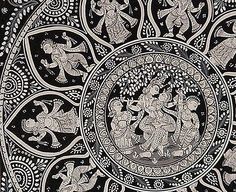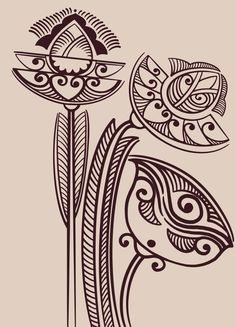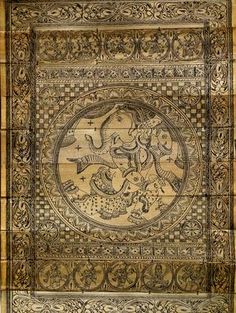Orissapatta Ddesign 03
Orissapatta, commonly known as Pattachitra, is a traditional form of painting that originates from the Indian state of Odisha. This vibrant art form is not only a visual delight but also a rich cultural narrative that reflects the heritage, mythology, and social fabric of the region. In this overview, we will explore the history, techniques, themes, and contemporary relevance of Orissapatta art.
Origins and Development

The roots of Orissapatta can be traced back to ancient times, with evidence suggesting its existence since the 5th century CE. The term “Pattachitra” comes from the words “Patta,” meaning cloth or canvas, and “Chitra,” meaning picture or painting. The art form has deep connections to the rituals and religious practices of Odisha, particularly through its association with temples and deities.
Influence of Temples
The temples of Odisha, particularly the Jagannath Temple in Puri, have been instrumental in the evolution of Orissapatta. Artists known as “Chitrakars” created paintings to depict divine figures, mythological stories, and scenes from religious texts. These artworks served not only as decorations for the temples but also as a means of storytelling for the largely illiterate population, thus preserving the cultural narratives of the region.
Dynastic Patronage
Throughout history, various dynasties, including the Kalinga and Ganga dynasties, supported and patronized this art form. Royal patronage enabled artisans to refine their techniques and expand their repertoire, leading to a rich and diverse body of work. This historical support has helped maintain the continuity of Orissapatta across centuries.
Techniques and Materials
Traditional Techniques
Orissapatta employs meticulous techniques that require great skill and patience. The process begins with preparing the canvas, typically made from cloth, which is coated with a mixture of chalk and tamarind seed paste. This preparation creates a smooth surface for painting.
Use of Natural Dyes

The colors used in Orissapatta are derived from natural sources. Artisans create vibrant hues from plants, minerals, and other organic materials, ensuring that the colors are not only beautiful but also environmentally friendly. Common colors include red, blue, yellow, and green, each chosen for its symbolic meaning.
Detailed Brushwork
Artists use fine brushes made from animal hair to apply the colors with precision. The intricate line work is a hallmark of Orissapatta, with detailed patterns and motifs that often depict flora, fauna, and mythological figures. The layering technique is essential, with multiple coats applied to achieve depth and richness.
Themes and Motifs
Mythological Narratives
One of the most prominent features of Orissapatta art is its portrayal of mythological narratives. Many paintings depict scenes from Hindu epics such as the Mahabharata and Ramayana, showcasing stories of gods, goddesses, and legendary heroes. These narratives are not only visually stunning but also serve to educate and inspire viewers about moral values and spiritual beliefs.
Cultural Symbolism
Orissapatta art is deeply intertwined with the cultural identity of Odisha. Artists often depict local festivals, rituals, and everyday life, reflecting the region’s traditions and social practices. This cultural symbolism enhances the connection between the artwork and the community, making it a vital part of Odisha’s cultural heritage.
Contemporary Themes
In recent years, contemporary artists have begun to explore new themes and subjects within the framework of Orissapatta. While retaining traditional techniques, these artists address modern issues such as environmentalism, social justice, and globalization. This adaptation helps keep the art form relevant and engaging for younger audiences.
Preservation and Challenges
Decline of Traditional Practices
Despite its rich history, Orissapatta art faces significant challenges today. Urbanization, globalization, and the decline of traditional patronage have led to a reduction in the number of practicing artisans. Many younger individuals are drawn to more lucrative career paths, resulting in a loss of traditional skills.
Initiatives for Preservation
Recognizing the importance of Orissapatta, various government and non-governmental organizations have launched initiatives to promote and preserve this art form. Workshops, exhibitions, and collaborations with artists aim to raise awareness and appreciation. Efforts are also being made to revive interest among the younger generation through education and training programs.
Digital Platforms
The rise of digital platforms has provided new opportunities for artisans to showcase their work. Online marketplaces and social media have made it easier for artists to reach a global audience, creating new avenues for income and recognition. This shift is crucial for the sustainability of Orissapatta art.
Conclusion

Orissapatta art is a vibrant expression of Odisha’s cultural heritage, characterized by its intricate designs, rich colors, and deep-rooted historical significance. It serves as a visual narrative that connects the past with the present, reflecting the spiritual and cultural life of the region. As it continues to evolve, the preservation and promotion of Orissapatta will be essential in ensuring that this unique art form thrives for generations to come. Through contemporary adaptations and support for artisans, Orissapatta can remain a vital part of India’s artistic landscape.
